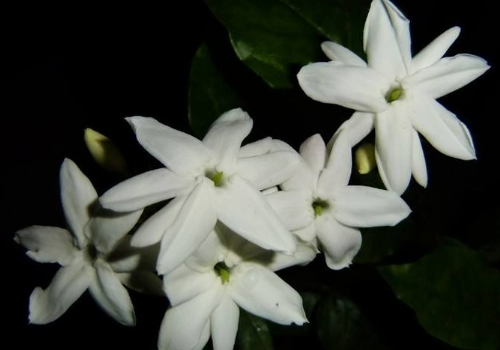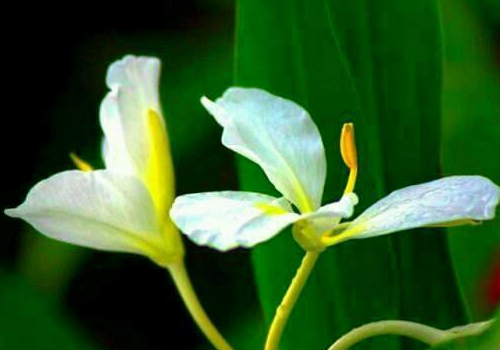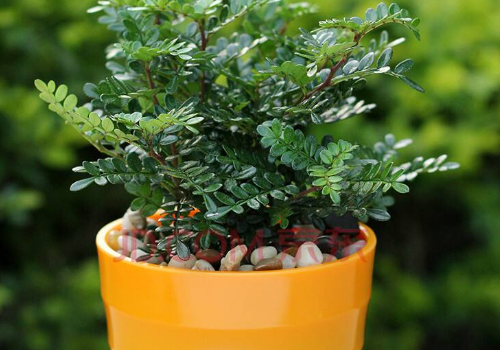Is Maojasmine poisonous? breeding methods and matters needing attention
Many people want to know if Mao jasmine is poisonous and whether it is the same as jasmine. Is Mao jasmine poisonous? Culture methods and matters needing attention:
Is Mao jasmine poisonous:
Hairy jasmine is not poisonous and has a certain edible value. The volatile oily substances contained in Mao jasmine have the effects of relieving qi and relieving pain, relieving depression and dispersing knots, and can relieve chest and abdominal pain, diarrhea and other symptoms, so it is a good food for pain relief. Hairy jasmine has an inhibitory effect on a variety of bacteria, internal and external use, can treat red eyes, sores, skin ulcers and other inflammatory diseases.

Culture methods and matters needing attention of hairy jasmine:
Culture methods:
1. Water and fertilizer management: maojasmine is watered, generally, it is better to keep the basin soil moist, and appropriate amount of water is needed. When the air is relatively dry, you can improve the humidity of the air by spraying water. Less watering is needed after autumn to ensure that the soil is not dry.
Fertilization is generally 7-10 days to apply fertilizer and water once, in summer, the application of phosphate fertilizer twice, can promote the growth of flower buds. Stop fertilizing in autumn.
2. light and temperature: Mao jasmine likes a warm and sunny growing environment, which generally needs to be given sufficient light during the growing season, but pay attention to shade in summer, especially at noon when the light is strong and hot.
Pay attention to heat preservation in winter, it is best to put it in a warm indoor maintenance, you need to find a place with sunshine.
3. Propagation method: the propagation of hairy jasmine is mainly cuttage propagation, which is carried out in spring and summer and propagates quickly. In addition, striping reproduction can be carried out.
Note:
1, change the pot: potted hairy jasmine needs to change the pot, usually in 2-3 years, usually in early spring in March or after flowering.
2. Pruning: the pruning of hairy jasmine is generally combined with changing pots, and it is necessary to prune the diseased, weak and withered branches of hairy jasmine, as well as cut off the old roots and flowering branches of hairy jasmine to promote the growth of new branches.
3, diseases and insect pests: hairy jasmine will have insect pests during the growth period, mainly leaf roll moths and red spiders, which need to be controlled in time, and generally can be sprayed and killed.
Molly is not poisonous.
Is Mao jasmine poisonous?
Although there are individual rumors that Mao jasmine is poisonous and not suitable for indoor breeding. But the editor learned through a variety of reliable ways that Mao jasmine is not only non-toxic, but also has many medicinal and edible effects.
Culture methods and matters needing attention of Xu Shu
Don't call it fake jasmine.
The plant kingdom.
Phylum angiosperm
Dicotyledonous class
Verbenaceae
Belonging to the genus paulownia
Distributed in Fujian, Taiwan, Guangdong, Guangxi and other provinces
Bark gray; twigs yellowish gray, pubescent. Leaves opposite, subleathery, ovate, Obovate or elliptic. Flowers smell like jasmine, so they are also called "fake jasmine".
1. Introduction
Xu Shu Clerodendrum inerme (also known as Kulang) shrub, 1-2m high.
Summer white slightly reddish flowers, Cymes axillary, with 3-7 flowers, fragrant; Corolla tube long; stamens purple, and style are very long. The drupe is Obovate, blue-black when ripe, and the seeds are oblong-ovate.
Xu tree is one of the main tree species for sand control afforestation along the southern coast. And roots, stems and leaves can be used as medicine.
This species is a poisonous plant listed in Chinese plant atlas database, and its toxicity is poisonous branches and leaves.
? Country of origin:
India, Sri Lanka, the Dutch were introduced to Taiwan in 1645.
? Distribution:
Low-altitude shrubs and grasslands in Taiwan; there are also in Penghu.
? Stem:
Stem much branched, slender, reddish on nodes, smooth glabrous, 2-3 m high.
? Results:
Capsule membranous, lid lobed, long oval. The fruit is between autumn and winter.
- Prev

Notes on how to raise White Butterfly Flower
White butterfly flower a kind of butterfly flower, many places use white butterfly flower to decorate the courtyard, how to raise white butterfly flower? Note: how to raise the white butterfly flower: 1. The best growth soil: the butterfly flower has strong adaptability, sand, clay and general soil can be cultivated, and the seedlings cultivated with sandy soil have well-developed roots.
- Next

How to Cuttage Propagation of Pepper Wood and the Modeling method of Bonsai
Pepper wood has many functions, so now there are many people who want to raise it. How can pepper wood be propagated by cuttings? Bonsai modeling method: how to cuttage propagation of pepper wood: 1. Walnut is also very important in the time of cutting, and cutting is best carried out in the Spring and Autumn period.
Related
- Fuxing push coffee new agricultural production and marketing class: lack of small-scale processing plants
- Jujube rice field leisure farm deep ploughing Yilan for five years to create a space for organic food and play
- Nongyu Farm-A trial of organic papaya for brave women with advanced technology
- Four points for attention in the prevention and control of diseases and insect pests of edible fungi
- How to add nutrient solution to Edible Fungi
- Is there any good way to control edible fungus mites?
- Open Inoculation Technology of Edible Fungi
- Is there any clever way to use fertilizer for edible fungus in winter?
- What agents are used to kill the pathogens of edible fungi in the mushroom shed?
- Rapid drying of Edible Fungi

